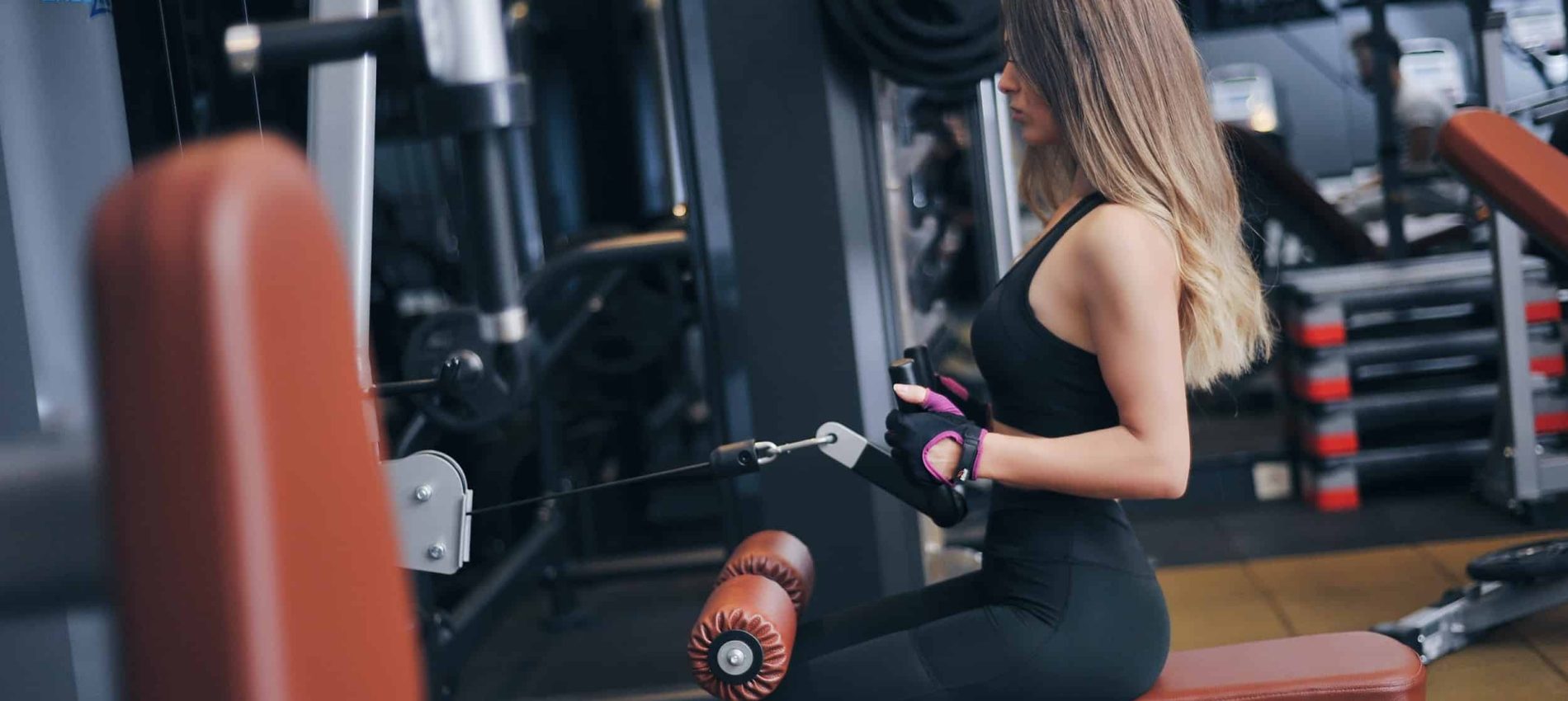The Importance of Quality Gym Equipment for Injury Prevention
In the pursuit of health and fitness, gym equipment plays a pivotal role in helping individuals achieve their goals. Whether it’s lifting weights, using cardio machines, or performing bodyweight exercises, equipment can significantly enhance workout effectiveness. However, the quality of gym equipment is often overlooked, especially when it comes to injury prevention. Poorly designed or substandard equipment can increase the risk of injury, potentially derailing fitness progress. This blog explores why investing in high-quality gym equipment is essential for safety, performance, and long-term success

Understanding the Connection Between Equipment Quality and Injuries
itness injuries are common, and many are directly related to the equipment used. According to several studies, injuries caused by poorly designed or malfunctioning gym equipment can lead to severe consequences, such as muscle tears, joint issues, and fractures. Here’s how poor-quality gym equipment can contribute to injuries:
Structural Instability: Cheap gym equipment is often built with low-grade materials, which can make it unstable. A wobbly bench, a rack that shifts, or a treadmill with uneven belts can put unnecessary stress on your body, increasing the risk of accidents.
Faulty Mechanics: Low-quality machines may have poorly designed mechanics, such as improper alignment or inadequate resistance. This can force your body into unnatural positions, placing stress on joints, ligaments, and muscles. How to Choose Quality Gym Equipment
Lack of Proper Support: Equipment like benches, racks, and platforms are designed to support your body while performing heavy lifts. Subpar gear might not provide adequate support, leading to poor posture and, ultimately, injury.
Wear and Tear: High-quality equipment is built to withstand frequent use, whereas lower-end products tend to degrade quickly. As equipment wears down, it becomes less reliable and may fail during a workout, leading to injury.
Let’s delve into what makes gym equipment “high-quality” and how these features can help reduce the risk of injury:
Ergonomic Design
Quality gym equipment is ergonomically designed to support the body’s natural movements. Whether you’re using a squat rack, bench press, or a rowing machine, the equipment should allow you to maintain proper form and avoid awkward positions that strain muscles and joints. For example, a well-designed bench press bench will align your body to engage your chest, shoulders, and arms in a balanced manner.Durability and Stability
High-quality gym equipment is made from durable materials such as reinforced steel or high-grade plastics. These materials ensure that the equipment remains stable and intact even under heavy use. A sturdy squat rack, for example, won’t wobble or shift while you’re lifting weights, providing a secure environment for heavy lifts.Adjustability
The best gym equipment is customizable to fit various body types and fitness levels. Adjustable features, such as seat height, resistance levels, and weight settings, allow users to tailor the equipment to their specific needs. This helps maintain proper body alignment during exercise, reducing the risk of injury. For instance, an adjustable bench press bench lets you position your body optimally, ensuring that you lift weights safely.Smooth Mechanics
Resistance machines, cable machines, and cardio equipment must have smooth mechanics to reduce the risk of injury. Machines with jerky or inconsistent movements can put undue stress on your muscles and joints. Quality equipment offers smooth, controlled movements that promote safe, effective workouts.Safety Features
Top-tier gym equipment comes with built-in safety features like automatic shut-off systems, safety catches, and overload protection. These features are designed to prevent accidents and reduce the risk of injury, especially during heavy lifting or high-intensity training. For example, treadmills often have emergency stop buttons, while power racks have safety pins to catch weights if a lifter fails
How to Choose Quality Gym Equipment
With a growing market filled with a wide range of gym equipment, it can be challenging to determine what constitutes high-quality gear. Here are some tips to guide you:
Brand Reputation
Established brands are more likely to produce reliable, high-quality equipment because they have a track record to maintain. Brands like Spartan Gear, known for their commitment to quality and innovation, often undergo rigorous testing to ensure the safety and durability of their products.Material and Construction
Always check the material used to build the equipment. Stainless steel frames, durable plastic, and commercial-grade materials generally indicate a higher quality product. These materials ensure the equipment can handle repeated use without breaking down or causing safety issues.Testing and Certifications
Look for gym equipment that has been tested for safety and comes with certifications from trusted organizations. This shows that the product has met industry standards and has been designed with user safety in mind.User Reviews
Before purchasing any gym equipment, read reviews from other users. Look for feedback regarding the equipment’s performance, durability, and safety features. Often, users will share valuable insights into how well the equipment works in real-world scenarios.Warranty and Customer Support
Quality gym equipment usually comes with a solid warranty and responsive customer support. A warranty is a sign that the manufacturer believes in the durability of their product and is willing to back it up. If something does go wrong, good customer support ensures that your issues are resolved quickly.
Key Elements of Quality Gym Equipment for Injury Prevention
Let’s delve into what makes gym equipment “high-quality” and how these features can help reduce the risk of injury:
Ergonomic Design
Quality gym equipment is ergonomically designed to support the body’s natural movements. Whether you’re using a squat rack, bench press, or a rowing machine, the equipment should allow you to maintain proper form and avoid awkward positions that strain muscles and joints. For example, a well-designed bench press bench will align your body to engage your chest, shoulders, and arms in a balanced manner.Durability and Stability
High-quality gym equipment is made from durable materials such as reinforced steel or high-grade plastics. These materials ensure that the equipment remains stable and intact even under heavy use. A sturdy squat rack, for example, won’t wobble or shift while you’re lifting weights, providing a secure environment for heavy lifts.Adjustability
The best gym equipment is customizable to fit various body types and fitness levels. Adjustable features, such as seat height, resistance levels, and weight settings, allow users to tailor the equipment to their specific needs. This helps maintain proper body alignment during exercise, reducing the risk of injury. For instance, an adjustable bench press bench lets you position your body optimally, ensuring that you lift weights safely.Smooth Mechanics
Resistance machines, cable machines, and cardio equipment must have smooth mechanics to reduce the risk of injury. Machines with jerky or inconsistent movements can put undue stress on your muscles and joints. Quality equipment offers smooth, controlled movements that promote safe, effective workouts.Safety Features
Top-tier gym equipment comes with built-in safety features like automatic shut-off systems, safety catches, and overload protection. These features are designed to prevent accidents and reduce the risk of injury, especially during heavy lifting or high-intensity training. For example, treadmills often have emergency stop buttons, while power racks have safety pins to catch weights if a lifter fails a rep.
Quality Gym Equipment Ensures Proper Form and Posture
One of the most critical aspects of injury prevention during exercise is maintaining proper form and posture. Improper technique can strain muscles, ligaments, and joints, leading to injuries that range from minor discomfort to serious damage.
How High-Quality Equipment Supports Proper Form:
Ergonomic Design: High-quality equipment is designed with biomechanics in mind, meaning it aligns with the natural movement patterns of the body. For example, a well-designed rowing machine ensures that your back, shoulders, and arms move in harmony, reducing the risk of straining your lower back or shoulders. Similarly, a well-constructed leg press machine will promote correct hip and knee alignment, which minimizes stress on the joints.
Adjustability: Quality equipment offers multiple adjustable components, allowing users to customize settings based on their body size, fitness level, and exercise preferences. For example, an adjustable weight bench allows you to modify the incline to suit different chest exercises, while adjustable seat heights on machines like the leg curl or lat pull-down enable users to maintain the right posture.
Resistance Control: Machines with variable resistance settings allow for gradual increases in weight or difficulty, ensuring that users progress safely. Quality resistance machines provide smooth transitions between different levels, preventing sudden jerks or jolts that could cause muscle strains or joint injuries.
Example:
Imagine doing a bench press with a poorly constructed bench that wobbles. The instability forces your muscles to compensate, causing uneven weight distribution and improper form, which could lead to shoulder, wrist, or back injuries. In contrast, a solid, stable bench with proper cushioning and adjustability supports your back and shoulders, reducing the risk of injury.
